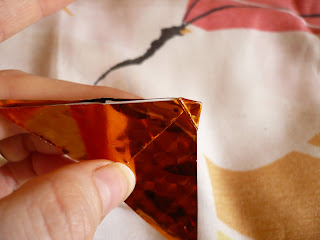As we all bid farewell to this short summer, I wanted to post some of the flowers we had this year. We had planted seeds in early April and this was the outcome in June-July. I know it's almost a month late but it's a nice way to say bye bye to the season and welcome to windy-cold Fall.

These malvas look like hibiscus but are not related by family. Their common name is Mallow and they are very popular in Mediterranean countries. The plant itself can grow and reach about 1m to 1.5m which is something rare to see. The flowers bloom in groups.
What is nice about this plant and what caught my attention as I was doing my research is that this is a plant know in the past for its medical and nutritious components and to my surprise it's a member of the family of : MOLOKHIA!
So this year I didn't know if this one was an edible plant but we had beautiful pink flowers.

OK, get this name: Tropaeolum Majus or what is commonly know as Monk's crest...I wonder why? Are a native plant of the South American continent. Yes my land! These are also edible and can make a great salad as they have a pepper taste...The seeds also are edible and look like capers. This year we got orangy red flowers but you can also find them in yellow.

This is an outcast. We got envelopes with seeds and well after a few months we saw this appear. We have no idea what this might be and it's quite curious. I like it because it's like a daisy in yellow and black and has polka dots in the same colors in the center. How elegant! We thought it was something like an African Daisy but the petals are much smaller. We only know that they are related. :P

We planted some bulbs we had from the previous year and bought some new ones in February. We decided to plan these once the snow had melted by end March and put all the bulbs together with some distance from each other. They were white, yellow, pink and red. So in the end we had by the month of June these nice flowers. They are lime yellow with red dots. We also had very nice fuchsia pink and white flowers as well and they lasted much longer that the ones you buy at the florist. We were lucky to have them for 2 to 3 weeks.

I went to the kitchen and I had some poppy seeds which I used for one of the recipes in this blog. Well, I think I've had these seeds for more than a year and I was just experimenting. I was surprised one day to see this green little thing growing and growing...until we saw it bloom!
They looked so delicate...we ended up having more seeds after they died and we replanted them on the same pot. I think we will have more in the coming months!

This is a plant that didn't die in winter and we have these for 3 summers now. They are called Pelargonias domesticus, easy to take care of and do not require mayor attention. You have to water them of course but besides this...you can leave them to grow and live on their own.
These are cornflowers. This was once a wild flower growing in crop fields, hence the name. It became extinct and now it is making its way back as an ornamental plant. Have you ever tasted the tea called Lady Grey from Twining? Well it has cornflower petals! It is also a good source of the color blue in paints. This year we had pink, purple, blue and white flowers, and I have to say they are still blooming since the end of May. Guess I will add some to my tea.

Marigolds! In Chile, we called them "Chinas". Although this is a plant originally from the Mediterranean region and what was once known as Mesopotamia. They are a remedy plant, having anti-viral and anti-inflammatory purposes. We had a whole bunch growing this year and they keep on blooming like the cornflowers. I had eaten some of the petals and they are not that bad. They are nice for salad and would surely decorate a dish in a great way.

Can you guess what this is?
It's a Pumpkin's flower.
We have had them for dinner too. We stuffed them with cheese and some seasoning... Placed in the oven for 5 minutes in medium heat...and voila! Tasty, Tasty, Tasty! They are truly tasty. I strongly recommend if you ever find them at the supermarket or out in the fields. Also Zucchini flowers are also very tasty and a good alternative.
Apparently there is a Male and a Female flower...I couldn't tell.





























